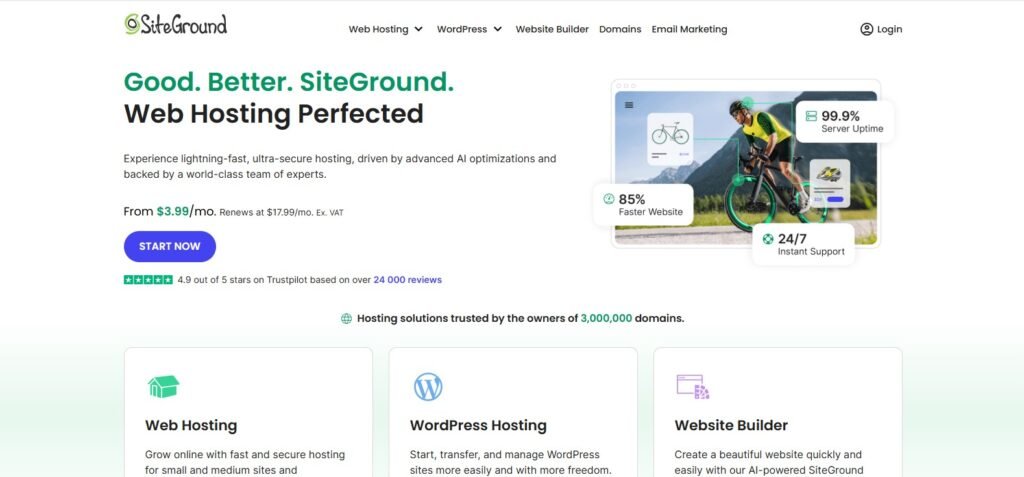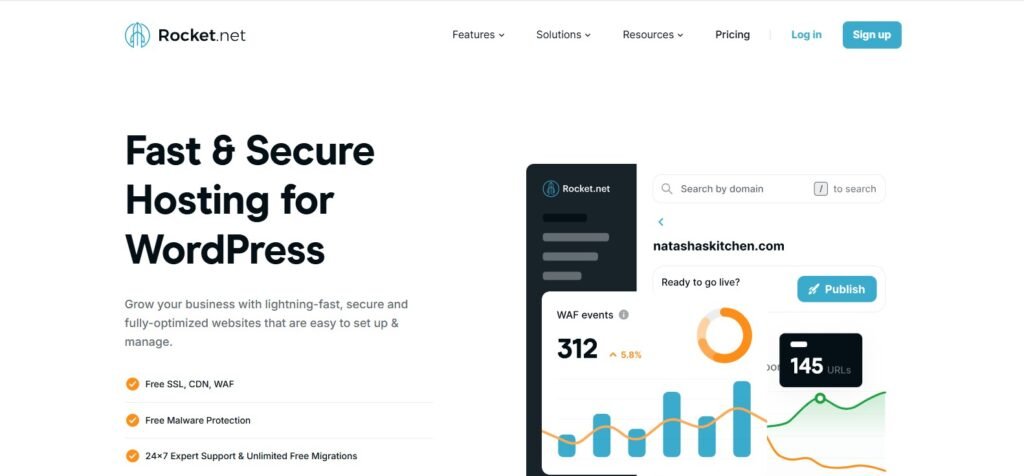Launching a membership website sounds simple—install WordPress, add a plugin like MemberPress or Paid Memberships Pro, and start collecting sign-ups. But once your community grows past a few hundred active users, you’ll notice the cracks: pages take longer to load, logins hang, payment gateways stall, and support tickets start piling up.
The truth is membership sites aren’t like blogs or portfolios. They’re dynamic, data-heavy ecosystems that demand constant server-side communication—authentication checks, restricted-content rules, database queries, and personalized dashboards. When you hit 1,000 members or more, your hosting infrastructure becomes the heartbeat of your business.
1. Why Typical “Shared Hosting” Fails for Membership Sites
Most entry-level hosting plans are built for static or lightly cached sites—think blogs or small business pages where visitors only read content. Membership sites, however, operate differently:
Every page load is dynamic, not cached.
Each login triggers multiple database lookups (user ID, membership level, expiration date, access permissions).
Dozens or hundreds of users may perform these actions simultaneously.
On shared hosting, all accounts fight for the same limited CPU, RAM, and I/O bandwidth. Once traffic spikes, even briefly, your server throttles performance or suspends your account. The result: frustrated members, refund requests, and declining retention.
2. The Hidden Complexity of “1,000 Users”
Many beginners misjudge what 1,000 members means technically. You’re not just storing 1,000 records in a database—you’re powering:
Concurrent logins (50 – 300 at any given time).
Session management and token validation.
Real-time content gating and payment renewal processing.
Automated emails, notifications, and webhooks between plugins.
Each of these operations consumes resources. Multiply them by hundreds of concurrent users and your site easily hits thousands of PHP executions per minute. Without optimized hosting, you’ll see timeouts, 500-errors, or database lock-ups long before you reach your 1,000-member milestone.
3. Why the Right Hosting Strategy Pays for Itself
Upgrading to the correct hosting tier may look expensive initially—$20–$60 per month instead of $5—but it’s an investment in stability, security, and user experience. A fast, responsive membership platform keeps users engaged, reduces churn, and enhances credibility.
Think of it like a gym membership: if the equipment is broken or overcrowded, people quit. Your hosting is that infrastructure—unseen but essential.
4. Key Performance Benchmarks for Membership Sites
Before you evaluate hosts, you must understand your technical baseline. For 1,000 members, you should aim for:
| Metric | Recommended | Why It Matters |
|---|---|---|
| Uptime | 99.9 % or higher | Every minute of downtime loses trust and revenue |
| Average Response Time | < 600 ms uncached | Membership pages can’t rely on cache |
| PHP Workers | 6 – 10 minimum | Each handles one concurrent process |
| Database Queries/s | 2,000 + | Needed for dynamic logins and permissions |
If your current plan doesn’t publish or meet these benchmarks, it’s not ready for a 1,000-member site.
Key Technical Factors That Determine Membership Site Performance
Choosing a hosting plan is only half the equation. What really separates a fast, stable membership site from a sluggish one is the technical architecture behind it. When your site crosses 1,000+ users, every millisecond and configuration choice matters.
1. PHP Workers – Your Site’s “Processing Units”
Each PHP worker handles one request at a time — for example, loading a dashboard, processing a login, or validating a payment.
If your site has 10 workers and 30 members log in simultaneously, 20 of them wait in a queue.
Ideal Benchmark:
Minimum 6–10 workers for 1 000 members.
Premium hosts like Kinsta and Rocket.net allocate extra dynamically during spikes.
More PHP workers = more simultaneous requests = smoother experience. When hosts limit workers, you’ll see pages hanging or blank screens during peak hours.
2. Database Optimization – The Heart of Membership Sites
Your WordPress database is queried constantly — for user data, memberships, payments, course progress, etc. Poor optimization leads to latency or even table crashes.
Critical actions:
Use MariaDB or MySQL 8+ (faster indexing).
Enable object caching (Redis / Memcached).
Run regular clean-ups using plugins like WP-Optimize.
Split read/write queries on higher-tier plans for load balance.
The bigger your member table grows, the more essential indexing, query optimization, and caching become.
3. Smart Caching Strategy
Unlike blogs, you can’t simply cache all pages — member dashboards, account pages, or payment screens must stay dynamic. But you can still cache:
Static assets (images, CSS, JS) using a CDN.
Public marketing pages.
API responses for short intervals (30–60 seconds).
Use plugin-aware caching systems (e.g., WP Rocket, LiteSpeed Cache) that exclude protected URLs automatically. Always test after enabling cache — misconfiguration can expose private content.
4. Bandwidth & Storage
A community of 1,000 users viewing videos, PDFs, or downloadable lessons will eat bandwidth fast.
Recommendations:
Minimum 1 TB monthly bandwidth.
Use external storage/CDN (Cloudflare R2, BunnyCDN, AWS S3) for large files.
Keep the hosting storage fast (SSD or NVMe).
If you exceed your plan’s data limits, performance throttles or costs skyrocket. Externalizing media keeps your core host lean and responsive.
5. Security Layers
Membership sites hold sensitive personal and payment information. Choose hosts that offer:
Free SSL (TLS 1.3) by default.
Malware scanning + WAF (Web Application Firewall).
Daily backups + one-click restore.
2FA for admin logins.
Also, ensure PCI-compliant payment integrations (Stripe, PayPal, Paddle) are supported.
6. CDN Integration
A global user base requires globally distributed speed.
CDNs (Content Delivery Networks) like Cloudflare, BunnyCDN, or Fastly cache your static content worldwide, cutting latency by 40 – 60 %.
Many managed hosts include built-in CDN nodes; activate them early to reduce load on origin servers.
7. Uptime Monitoring & Diagnostics
Even top hosts occasionally falter. Set up independent uptime monitoring via UptimeRobot or Better Uptime.
Track:
CPU load
RAM usage
PHP worker queues
Database query times
When numbers creep up, scale resources before failures hit.
Best Hosting Providers for Membership Sites with 1,000+ Users (2025 Edition)
You already know the theory — now let’s get practical.
Below are the top hosting providers that have proven reliability, speed, and scalability for membership websites expecting 1,000+ active users.
These aren’t generic “cheap” hosts — they’re engineered for concurrency, uncached traffic, and growth.
1. Kinsta – Enterprise Power on Google Cloud

Website: www.kinsta.com
Why it’s ideal:
Kinsta uses Google Cloud Platform’s Premium Tier network, meaning your site runs on the same infrastructure as YouTube and Gmail.
Their C2 servers are optimized for dynamic sites like membership communities and eLearning platforms.
Key Features:
Managed WordPress hosting with 30+ global data centers.
Auto-scaling for traffic surges.
Redis caching + Nginx + PHP 8.2 for max performance.
Uptime guarantee: 99.99%.
24/7 expert support.
Performance:
Kinsta easily handles 1,000+ logged-in users, with minimal latency (avg. 500 ms). Their PHP worker allocation dynamically increases during peak times.
Pricing: Starts at $35/month — premium but worth every dollar for serious membership platforms.
✅ Best For: Growing communities, course websites, or coaching platforms expecting steady growth.
2. Cloudways – Flexible Cloud VPS for Scaling

Website: www.cloudways.com
Cloudways lets you choose between DigitalOcean, AWS, Vultr, or Google Cloud servers — then manages everything for you (security, backups, updates).
Why it fits membership sites:
Complete control over server specs.
Easy scaling — add more RAM/CPU instantly.
Built-in cache layers (Varnish, Redis, Memcached).
Automatic backups and SSL.
24/7 human chat support.
Performance:
A $42/month Cloudways DigitalOcean 4GB plan comfortably supports 1,500–2,000 members if optimized with Redis and CDN.
✅ Best For: Developers or intermediate users who want flexibility and power at mid-range pricing.
3. WPX Hosting – High-Speed Simplicity

Website: www.wpx.net
WPX focuses on speed and simplicity — perfect for creators who want powerful hosting without technical setup.
Features:
Free migrations.
Custom CDN (WPX Cloud).
SSD-powered servers optimized for WordPress.
Instant 30-second average support response time.
Daily backups + DDoS protection.
Performance:
Handles 1,000+ members with ease, especially if you use caching plugins + CDN.
✅ Best For: Non-technical users who value fast human support and stable performance.
4. SiteGround – Cloud Hosting for Dynamic Workloads

Website: www.siteground.com
Why it’s solid:
SiteGround’s cloud plans are built on Google Cloud’s renewable energy network and optimized for PHP + dynamic traffic.
Features:
Ultrafast PHP + Nginx setup.
Auto-scaling cloud architecture.
Staging tools for testing updates.
Excellent security stack (AI anti-bot + WAF).
Performance:
Their Jump Start Cloud plan ($100/month) easily supports 1,000–2,000 members with constant uptime.
✅ Best For: Growing businesses who want managed scalability without DevOps work.
5. Rocket.net – CDN-First, Blazing Performance

Website: www.rocket.net
Why it’s unique:
Rocket.net runs on Cloudflare Enterprise, serving every page — even dynamic ones — from the nearest edge server.
That means sub-second loading times worldwide.
Features:
Enterprise CDN with WAF included.
Unlimited PHP workers.
Full-page caching for logged-in users (custom logic).
Automatic SSL, backups, and malware protection.
24/7 live chat with WordPress experts.
Performance:
Virtually zero downtime. Perfect for high-end membership and eCommerce sites.
✅ Best For: Premium creators, agencies, or LMS platforms that prioritize global reach and instant speed.
Quick Comparison Table
| Hosting Provider | Starting Price | Strength | Ideal For |
|---|---|---|---|
| Kinsta | $35/mo | Enterprise-grade cloud, auto-scaling | Large communities |
| Cloudways | $14–$42/mo | Flexible cloud VPS control | Tech-savvy owners |
| WPX | $24.99/mo | Simplicity + speed | Beginners/non-tech users |
| SiteGround Cloud | $100/mo | Auto-scaling + staging | Mid-to-large brands |
| Rocket.net | $30/mo | Edge CDN + max performance | Global membership sites |
Step-by-Step Hosting Checklist, Migration Strategy & Future Scaling Roadmap
You’ve seen which hosting types and providers perform best for 1,000+ member websites.
Now let’s move from theory to action.
This section gives you a practical roadmap—how to choose, migrate, and scale your membership site confidently while protecting your uptime, data, and user experience.
Step 1: Assess Your Current Setup
Before migrating, document your existing environment:
Hosting provider and plan type.
Average monthly traffic and concurrent users.
Total database size (in MB or GB).
Plugin list (especially membership and caching plugins).
Page load times (both logged-in and public).
This gives you a baseline for measuring performance gains post-migration.
Tools like GTmetrix, Query Monitor, and WP Benchmark Tool help you collect accurate data.
Step 2: Choose the Right Host for Your Stage
Here’s a quick guide based on user volume and growth phase:
| Stage | Member Count | Recommended Host Type | Example |
|---|---|---|---|
| Launch | 0–300 | Managed VPS | Cloudways, Hostinger VPS |
| Growth | 300–1,000 | Cloud Hosting | Kinsta, WPX |
| Scale | 1,000–5,000+ | Cloud or Dedicated | Rocket.net, SiteGround Cloud |
When in doubt, choose a managed cloud plan. It gives you scalability and support without technical complexity.
Step 3: Migrate Without Downtime
A poor migration can ruin user trust instantly. To avoid chaos:
1️⃣ Back up everything – database, wp-content folder, emails, and SSL keys.
2️⃣ Use staging mode – set up your new host and test all logins, checkout pages, and emails privately.
3️⃣ Schedule DNS switch during low-traffic hours – ideally midnight to 3 a.m. your local time.
4️⃣ Keep both hosts active for 48 hours – ensures no data loss during DNS propagation.
Most premium hosts (Kinsta, WPX, Rocket.net) offer free, white-glove migrations, so use them instead of manual transfers.
Step 4: Optimize After Migration
After your site is live on the new host, focus on post-launch tuning:
Enable object cache (Redis or Memcached).
Optimize your database weekly.
Minimize plugins — remove redundant ones.
Integrate CDN + image compression (WebP).
Monitor resource usage monthly and upgrade early if RAM or CPU maxes out.
This keeps your performance consistent even as membership grows.
Step 5: Create a Long-Term Scaling System
Membership websites evolve fast — from hundreds to thousands of users, new course modules, or community forums. Plan for scalability now.
Set scaling alerts: Use your host’s dashboard to trigger notifications when CPU/RAM hits 80%.
Automate backups daily.
Review hosting annually: Don’t assume today’s setup fits tomorrow’s audience.
Document SOPs (Standard Operating Procedures) for updates, caching, and troubleshooting—so anyone on your team can act fast.
If you expect traffic bursts (e.g., product launches, new course enrollments), ask your host to pre-scale CPU or PHP workers temporarily.
Step 6: Maintain Security and Trust
Even with great performance, one breach can destroy credibility.
Install a Web Application Firewall (WAF).
Enable Two-Factor Authentication (2FA).
Use real-time malware monitoring.
Always keep SSL valid and auto-renewing.
Your members trust you with personal data—make sure your infrastructure earns that trust.
Final Thoughts
Your hosting is not just a technical choice — it’s the foundation of your membership business.
A 1,000+ member site lives and dies by uptime, speed, and scalability.
Choose wisely, invest early, and manage proactively.
When performance feels invisible to your users, that’s when you know your hosting is working perfectly.
And as your community grows from 1,000 to 10,000 members, you’ll be ready — stable, fast, and future-proof. 🚀



